We use information collected through cookies and similar technologies to improve your experience on our site, analyze how you use it and for marketing purposes.
Your privacy settings
We and our partners use information collected through cookies and similar technologies to improve your experience on our site, analyze how you use it and for marketing purposes. Because we respect your right to privacy, you can choose not to allow some types of cookies. However, blocking some types of cookies may impact your experience of the site and the services we are able to offer. In some cases, data obtained from cookies is shared with third parties for analytics or marketing reasons. You can exercise your right to opt-out of that sharing at any time by disabling cookies.
Manage Consent Preferences
Necessary
Always ON
These cookies and scripts are necessary for the website to function and cannot be switched off. They are usually only set in response to actions made by you which amount to a request for services, such as setting your privacy preferences, logging in or filling in forms. You can set your browser to block oralert you about these cookies, but some parts of the site will not then work. These cookies do not store any personally identifiable information.
Analytics
These cookies and scripts allow us to count visits and traffic sources, so we can measure and improve the performance of our site. They help us know which pages are the most and least popular and see how visitors move around the site. All information these cookies collect is aggregated and therefore anonymous. If you do not allow these cookies and scripts, we will not know when you have visited our site.
Embedded Videos
These cookies and scripts may be set through our site by external video hosting services likeYouTube or Vimeo. They may be used to deliver video content on our website. It's possible for the video provider to build a profile of your interests and show you relevant adverts on this or other websites. They do not directly store personal information, but are based on uniquely identifying your browser and internet device. If you do not allow these cookies or scripts it is possible that embedded video will not function as expected.
Google Fonts
Google Fonts is a font embedding service library. Google Fonts are stored on Google's CDN. The Google Fonts API is designed to limit the collection, storage, and use of end-user data to only what is needed to serve fonts efficiently. Use of Google Fonts API is unauthenticated. No cookies are sent by website visitors to the Google Fonts API. Requests to the Google Fonts API are made to resource-specific domains, such as fonts.googleapis.com or fonts.gstatic.com. This means your font requests are separate from and don't contain any credentials you send to google.com while using other Google services that are authenticated, such as Gmail.
Marketing
These cookies and scripts may be set through our site by our advertising partners. They may be used by those companies to build a profile of your interests and show you relevant adverts on other sites. They do not store directly personal information, but are based on uniquely identifying your browser and internet device. If you do not allow these cookies and scripts, you will experience less targeted advertising.
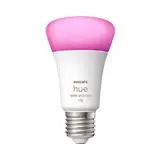
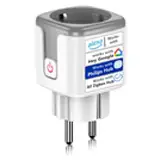
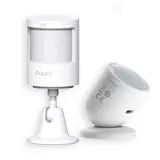
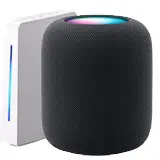
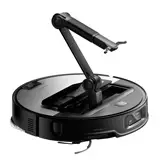

Is it possible to hack into a smart home? Cybersecurity tips
Imagine this: you're sitting on your couch, relaxing, controlling your lights, heating and home security with just a tap of your phone. That's the promise of a smart home. But what if someone else could control your home - is it really possible to hack into a smart home and what are the consequences?
The Reality of Smart Home Hacking
The short answer is: yes, it is possible. Smart homes, filled with connected devices, offer a wider attack surface for cybercriminals. Every device, from a smart light bulb to a Wi-Fi controlled door lock, is a potential entry point. The Internet of Things (IoT), while convenient, introduces significant risks if proper precautions are not taken.
Hackers are not just looking to steal personal information. They may want total control of your home to spy on you, steal from you, or even conduct broader attacks using your network as a starting point. The ease with which certain vulnerabilities can be exploited is alarming.
Common Examples of Attacks
Why are Smart Homes Vulnerable?
Several reasons contribute to the vulnerability of smart homes. Chief among them is the lack of cybersecurity awareness among users. Many simply plug in devices and use them without changing default passwords or enabling security features.
Key Vulnerability Factors:
Cybersecurity Tips for Smart Homes
The good news is that protecting your smart home is not as difficult as it seems. With a little caution and by following a few best practices, you can significantly reduce the risk of being hacked. Here are some essential tips:
Wi-Fi Network Security: The Basis of It All
Securing your Individual IoT Devices
Physical Security and Privacy
In addition to cyber security, it is also important to consider the physical security of your devices and your privacy.
Useful Tools to Protect Your Smart Home
There are several tools that can help you protect your smart home:
Examples of Secure Configuration
Let's look at some specific examples of how to configure common devices securely:
Smart Security Cameras:
Smart Thermostats
The Importance of Education and Awareness
Cybersecurity is a continuous process, not a one-time event. It is crucial to stay informed about the latest threats and vulnerabilities, and adapt your security measures accordingly. Education and awareness are key to protecting your smart home.
Resources for Staying Informed:
Conclusion: A Safe Smart Home is Possible
Although the possibility of hacking a smart home is real, you should not give up the advantages of technology. By following the above cybersecurity tips, you can significantly reduce the risk of falling victim to an attack. The key is to be proactive, stay informed and take the necessary precautions.
Remember: the security of your smart home is your responsibility. Invest time in protecting your devices and your network, and enjoy the benefits of technology with peace of mind.
Did you find this article helpful? Share it with your friends and family so they can protect their smart homes too! Leave a comment if you have any additional questions or tips.
Related Posts
TOP 5 facial recognition video surveillance systems
Tired of traditional video surveillance? Looking for smarter security? Facial recognition is here to stay. We no longer just record, now we analyze. In this article, we present the TOP 5 facial recognition video surveillance systems. Get ready to discover a new dimension in protecting your home, business, or property. Security…
Smoke and gas detectors: protecting your home from fires
Your home is your sanctuary. You want to feel safe, right? Fires are one of the biggest threats to home safety. But, did you know that most house fires are preventable? One of the best tools to achieve this is smoke and gas detectors. They work as your silent guardians, always vigilant…
How to Detect Gas Leaks with Smart Devices
Picture this: you're sleeping peacefully, unaware that a gas leak is slowly filling your home. Scary, isn't it? Fortunately, modern technology offers us solutions to prevent these situations. We no longer rely on smell alone; we can now detect gas leaks with smart devices. These devices, increasingly affordable and easy to use, ...
Smart security cameras: how to choose and where to install them
Worried about the security of your home or business? Smart security cameras are a great way to keep an eye on everything, and from anywhere! But with so many options on the market, how do you know which one to choose and where to place it strategically? Don't worry, we will guide you step by step so that you can become a ...